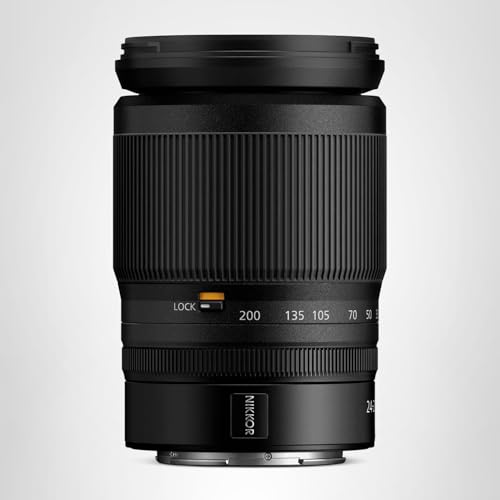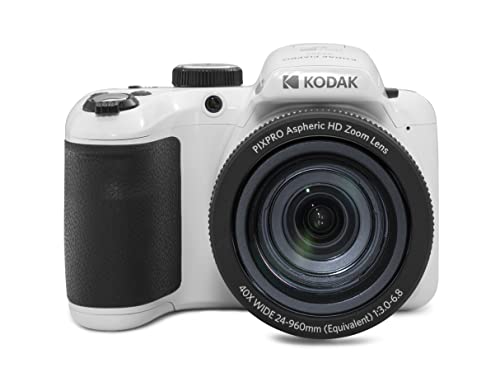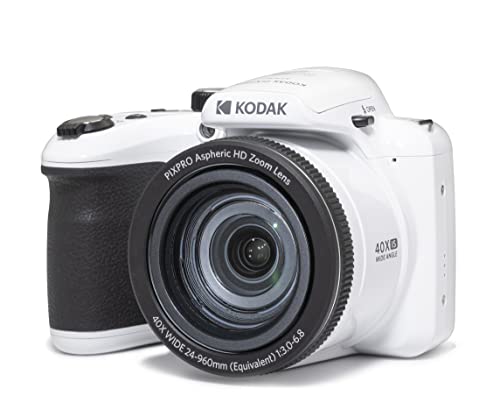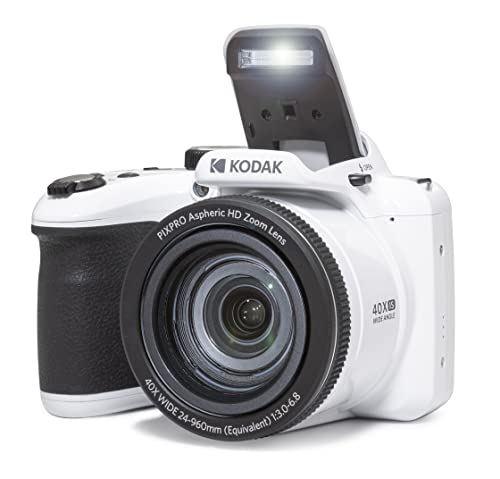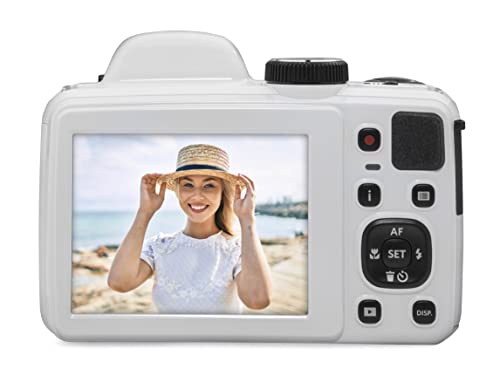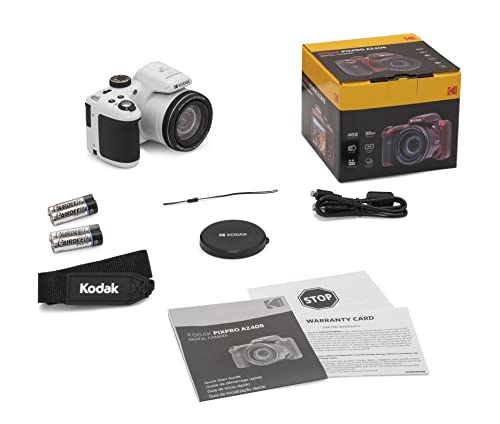




As a photography enthusiast, I’m always on the lookout for the best equipment to capture those perfect shots. When it comes to digital cameras, Nikon has always been a go-to brand for professionals and amateurs alike. With their range of high-quality cameras, it’s no surprise that Nikon offers some of the best digital zoom cameras on the market.
When choosing a digital zoom camera, one of the most important factors to consider is the image quality. Nikon cameras are known for their exceptional image quality, with sharp details and vibrant colors. Whether you’re capturing landscapes or portraits, a Nikon camera will always deliver stunning results.
Another crucial aspect of a digital zoom camera is its zoom capabilities. Nikon offers a variety of cameras with different zoom ranges, allowing you to get up close to your subject without sacrificing image quality. Whether you’re shooting wildlife or capturing sports action, a Nikon camera will give you the flexibility to get the perfect shot.
In addition to image quality and zoom capabilities, Nikon cameras also offer a range of features and advanced technology. From built-in Wi-Fi for easy sharing to advanced autofocus systems, Nikon cameras are designed to enhance your photography experience. Whether you’re a beginner or an experienced photographer, you’ll appreciate the intuitive controls and user-friendly interface of a Nikon camera.
In conclusion, if you’re in the market for a digital zoom camera, you can’t go wrong with Nikon. With their exceptional image quality, zoom capabilities, and innovative features, Nikon cameras are a top choice for capturing stunning photos. Whether you’re a professional photographer or just starting out, a Nikon camera will help you take your photography to the next level.
Best Nikon Digital Zoom Camera: A Comprehensive Guide to Making the Right Choice
If you’re in the market for a Nikon digital zoom camera, you’re likely overwhelmed with the number of options available. It can be daunting to navigate through the various models and features to find the perfect camera that suits your specific needs. In this comprehensive guide, I’ll break down some key factors to consider when choosing the best Nikon digital zoom camera for you.
1. Megapixel Count: One of the most important factors to consider when choosing a Nikon digital zoom camera is the megapixel count. Higher megapixels generally result in clearer and more detailed images. However, keep in mind that a high megapixel count can also mean larger file sizes, which may take up more storage space on your memory card.
2. Optical Zoom Range: Another crucial factor to consider is the optical zoom range. Optical zoom allows you to get closer to your subject without sacrificing image quality, unlike digital zoom which simply crops the image. A camera with a larger optical zoom range will enable you to capture distant subjects with clarity and precision.
3. Image Stabilization: Image stabilization technology is an essential feature to look out for, especially if you plan on shooting in low light conditions or without a tripod. Nikon offers various types of image stabilization, including optical image stabilization and electronic vibration reduction. Make sure to choose a camera with effective image stabilization to minimize blur caused by camera shake.
4. Video Capabilities: If you’re interested in capturing high-quality videos, make sure to check the camera’s video capabilities. Look out for features like 4K video recording, slow-motion capabilities, and microphone input for better audio quality. Consider your specific video needs and choose a camera that offers the right features for your videography projects.
5. Price and Budget: Lastly, consider your budget when choosing a Nikon digital zoom camera. Determine how much you’re willing to spend and prioritize the features that are most important to you. Nikon offers a range of camera models at different price points, so you’ll be able to find one that fits your budget while still meeting your photography needs.
By considering these factors and thoroughly researching the options available, you’ll be able to make an informed decision and choose the best Nikon digital zoom camera for your photography needs. Whether you’re a casual photographer or a professional, Nikon offers a wide range of cameras that cater to various skill levels and budgets.
Factors to Consider When Choosing a Nikon Digital Zoom Camera
When it comes to choosing a Nikon digital zoom camera, there are several factors that you should consider to ensure you make the right choice. These factors can greatly impact the quality and functionality of the camera, allowing you to capture the best possible images and videos. Here are some key factors to keep in mind:
Zoom Range:
One of the most important factors to consider when choosing a Nikon digital zoom camera is the zoom range it offers. The zoom range determines how closely you can capture distant subjects and is measured in terms of optical zoom. A camera with a higher optical zoom range allows you to get closer to the subject without sacrificing image quality. Consider your shooting needs and determine the appropriate zoom range for your requirements.
Megapixel Count:
The megapixel count of a Nikon digital zoom camera is another crucial factor to consider. The higher the megapixel count, the more detail and clarity your images will have. However, it’s important to note that a higher megapixel count doesn’t necessarily translate to better image quality. Other factors, such as sensor size and image processing capabilities, also play a role. Assess your intended usage and determine the optimal balance between megapixel count and other features.
Image Stabilization:
Image stabilization is a crucial feature to look for in a Nikon digital zoom camera, especially if you plan on shooting in low light conditions or while moving. This feature helps reduce camera shake and produces sharper, clearer images. There are different types of image stabilization, including optical and electronic stabilization. Consider the type of stabilization that best suits your shooting needs and make sure the camera you choose has this feature.
Video Recording Capability:
If you’re interested in recording videos with your Nikon digital zoom camera, it’s important to consider its video recording capabilities. Look for features such as 4K or 1080p video recording, slow-motion capabilities, and microphone input options. Additionally, check the camera’s autofocus and image stabilization during video recording to ensure smooth and high-quality footage.
Additional features:
- Consider other features that may be important to you, such as built-in Wi-Fi or Bluetooth connectivity for easy sharing and remote control.
- Look for a camera with a fast and accurate autofocus system, especially if you plan on capturing fast-moving subjects.
- Check the camera’s battery life to ensure it can last for your shooting needs.
- Consider the size and weight of the camera, especially if you plan on carrying it with you for extended periods.
By considering these factors when choosing a Nikon digital zoom camera, you can select the one that best fits your requirements and helps you capture stunning images and videos.
Sensor Size: Why it Matters for Digital Zoom Cameras
When it comes to choosing a digital zoom camera, one of the most important factors to consider is the sensor size. The sensor is the part of the camera that captures light and converts it into an image. It plays a crucial role in determining the overall image quality, including sharpness, detail, and low-light performance. So why does sensor size matter for digital zoom cameras?
The sensor size affects the amount of light that can be captured by the camera. A larger sensor will typically have larger pixels, allowing for more light to be gathered. This results in better image quality, especially in low-light conditions. With a larger sensor, photographs taken with digital zoom will tend to have less noise and better dynamic range, meaning they can capture more details in both bright and dark areas of the image. Smaller sensors, on the other hand, may struggle to produce high-quality images when using digital zoom due to their limited light-gathering capabilities.
Furthermore, a larger sensor also allows for better control over depth of field. Depth of field refers to the range of distance over which objects appear in focus. With a larger sensor, you can achieve a shallower depth of field, which can be desirable when capturing portraits or emphasizing a specific subject. On the other hand, smaller sensors tend to have a larger depth of field, which can be advantageous for landscape photography where you want everything to be in focus.
In conclusion, when choosing a digital zoom camera, it’s important to pay attention to the sensor size. A larger sensor will result in better image quality, especially in low-light conditions, while also offering more control over depth of field. So if you want to get the most out of your digital zoom camera, opt for one with a larger sensor size.
Megapixels: Understanding the Impact on Image Quality
As a photography enthusiast, I have always been intrigued by the connection between megapixels and image quality. Megapixels refer to the number of pixels that a camera’s image sensor can capture. The higher the number of megapixels, the more detail can be captured in an image. However, it is important to understand that simply having more megapixels does not necessarily guarantee better image quality.
When it comes to image quality, there are several factors at play. One important factor is the size of the image sensor. A larger sensor can capture more light, resulting in better low-light performance and improved dynamic range. So, even if a camera has a lower number of megapixels, it can still produce stunning images if it has a large image sensor.
Another factor to consider is the quality of the camera’s lens. A high-quality lens can significantly impact image quality, regardless of the number of megapixels. A lens that can capture sharp and detailed images with minimal distortion will ultimately result in better overall image quality.
Furthermore, the camera’s image processing capabilities also play a role in determining image quality. The processing algorithms used by the camera can affect various aspects of the image, such as noise reduction, color reproduction, and sharpness. So, even if a camera has a high number of megapixels, if it lacks advanced image processing features, the image quality may still be lacking.
In conclusion, while the number of megapixels is an important aspect to consider when choosing a digital camera, it is not the sole determinant of image quality. Factors such as the size of the image sensor, the quality of the lens, and the camera’s image processing capabilities also play a crucial role. It is essential to consider all these factors in combination to make an informed decision and ensure the best possible image quality.
Zoom Range: Finding the Right Balance Between Flexibility and Image Quality
As a photography enthusiast, one of the key factors to consider when choosing a Nikon digital zoom camera is the zoom range. It is important to find the right balance between flexibility and image quality to ensure you capture the perfect shot in various situations.
Having a wide zoom range allows you to get closer to the subject without physically moving closer. This flexibility is particularly useful when photographing wildlife, sports events, or any other scenario where getting physically close to the subject might not be possible or might disturb the scene. With a wider zoom range, you have the freedom to frame your shots effectively, capturing the details and nuances that make the image more captivating.
However, it is essential to keep in mind that while a wide zoom range can offer more flexibility, it may compromise the image quality. The more the lens zooms in, the more chances there are for distortion, noise, and loss of sharpness. To maintain the highest image quality, it is advisable to choose a lens with a narrower zoom range and higher optical performance. This way, you can ensure that your photos are crisp, clear, and have excellent color reproduction.
When choosing a Nikon digital zoom camera, evaluate your shooting preferences and needs. If you prioritize flexibility and the ability to capture a wide range of subjects, opt for a camera with a wider zoom range. On the other hand, if image quality is your top priority, choose a camera with a narrower zoom range and superior optical performance. Finding the right balance between flexibility and image quality will ultimately result in more satisfying and visually stunning photographs.
Image Stabilization: Ensuring Sharp and Blur-Free Photos
When it comes to capturing the perfect moment, getting sharp and blur-free photos is crucial. Whether you are a professional photographer or an amateur enthusiast, having a camera with reliable image stabilization is essential. With Nikon digital zoom cameras, you can ensure that your images are sharp and free from unwanted blurriness.
Image stabilization is a technology that helps reduce camera shake, resulting in sharper images. It compensates for any movement or shake of the camera that can occur when taking handheld shots or shooting in low light conditions. With image stabilization, you can capture clear and detailed photos without the need for a tripod or additional equipment.
With Nikon digital zoom cameras, you can enjoy various image stabilization features that ensure sharp and blur-free photos. One such feature is optical image stabilization, which uses specialized lenses or sensor-shift technology to counteract camera shake. This technology detects any movement and adjusts the position of the lens or image sensor to compensate for it, resulting in clear and crisp images.
Another feature available in Nikon cameras is electronic image stabilization, which uses software algorithms to digitally compensate for camera shake. This technology analyzes the motion of the camera and applies corrections to the image in real time, reducing blur and producing sharp photos. Nikon cameras also offer a combination of both optical and electronic image stabilization, providing enhanced stability and ensuring the best possible image quality.
Whether you are capturing fast-moving subjects, shooting in low light, or simply want to ensure sharpness in your photos, image stabilization is an essential feature to look for in a camera. With Nikon digital zoom cameras, you can trust that your images will come out sharp, clear, and free from blurriness, allowing you to capture every moment with confidence.
Autofocus System: Crucial for Capturing Fast-Moving Subjects
The autofocus system is a crucial feature to consider when choosing a digital zoom camera, especially if you plan to capture fast-moving subjects. Whether you’re photographing sports events, wildlife, or even your kids running around, a responsive and accurate autofocus system can make all the difference in capturing sharp and well-focused images.
Modern Nikon cameras are equipped with advanced autofocus systems that utilize various technologies to track and lock on to subjects quickly and accurately. These systems typically include multiple autofocus points spread across the frame, allowing you to select the desired focus point or let the camera automatically choose the appropriate one.
Phase Detection Autofocus (PDAF):
One of the most common autofocus technologies used in Nikon cameras is Phase Detection Autofocus (PDAF). This technology utilizes special sensors located on the camera’s image sensor or dedicated autofocus sensor to measure the phase difference between light rays coming from different parts of the scene. By analyzing this phase difference, the camera can determine the focus distance accurately and adjust the lens accordingly for sharp focus.
PDAF is known for its fast and accurate autofocus performance, making it ideal for capturing fast-moving subjects. Nikon cameras often offer a high number of autofocus points utilizing PDAF technology, allowing you to track subjects across the frame effectively.
Contrast Detection Autofocus (CDAF):
Contrast Detection Autofocus (CDAF) is another autofocus technology commonly found in Nikon cameras. This technology analyzes the contrast of the scene to determine the focus distance. While CDAF may not be as fast as PDAF, it provides high accuracy and is particularly useful for capturing still subjects or scenes with low contrast.
Nikon cameras typically offer both PDAF and CDAF systems, allowing you to choose the most appropriate autofocus mode for your shooting needs.
When selecting a Nikon digital zoom camera, pay attention to the autofocus system specifications and features. Look for a camera with a high number of autofocus points, fast autofocus speed, and advanced tracking capabilities. These features will help you capture fast-moving subjects with ease and confidence.
Conclusion:
An effective autofocus system is crucial when it comes to capturing fast-moving subjects with a digital zoom camera. Nikon cameras offer advanced autofocus technologies such as Phase Detection Autofocus (PDAF) and Contrast Detection Autofocus (CDAF) to ensure accurate and responsive focus. When choosing a Nikon camera, consider the autofocus system’s specifications and features to ensure it meets your specific shooting needs.
Best nikon digital zoom camera
Features
| Part Number | 26532 |
| Model | 26532 |
| Warranty | 1 year manufacturer |
| Color | Black |
| Release Date | 2020-02-06T00:00:01Z |
| Price history for Nikon COOLPIX P950 Superzoom Digital Camera | |
|---|---|
|
Latest updates:
|
|
Features
| Part Number | 26541 |
| Model | 26541 |
| Warranty | 1 Year Limited Manufacturer |
| Color | Black |
| Release Date | 2025-02-04T00:00:01Z |
| Size | Full-Size |
Features
| Part Number | 20092 |
| Model | 20092 |
| Warranty | All new Nikon cameras, lenses, flashes and accessories include a one-year limited warranty. During this period, if the product is found to be defective in material or workmanship, Nikon Inc or one of its authorized repair facilities will either repair or replace the product without charge (as long as it meets the terms of the warranty). No registration or “warranty” card is needed with these products; simply retain your original dated proof-of-purchase in case warranty service is needed. We recommend registering your product so we can send you information about future updates or service issues that may arise. |
| Release Date | 2020-06-19T00:00:01Z |
| Price history for Nikon NIKKOR Z 24-200mm VR Lens | |
|---|---|
|
Latest updates:
|
|
Features
| Part Number | HDV3051L |
| Model | HDV-3051L |
| Warranty | 1 year |
| Color | black |
Features
| Model | W08 |
| Color | YL15-W08-C-Black |
| Is Adult Product |
Features
| Part Number | 080BK1A |
| Model | 080BK1A |
| Warranty | 1 year |
| Color | Black |
| Release Date | 2025-05-07T00:00:01Z |
| Size | 5K |
Features
| Part Number | AZ405-WH |
| Model | AZ405-WH |
| Warranty | 1 year manufacturer |
| Color | White |
| Release Date | 2022-11-05T00:00:01Z |
| Language | English |
| Price history for KODAK PIXPRO AZ405 Digital Camera | |
|---|---|
|
Latest updates:
|
|
Features
| Part Number | COOLPIX P1000 |
| Model | 26522 |
| Warranty | manufacture |
| Color | Black |
| Release Date | 2018-09-06T00:00:01Z |
| Price history for Nikon COOLPIX P1000 Superzoom Camera | |
|---|---|
|
Latest updates:
|
|
Question and answers:
What is the best Nikon digital zoom camera?
The best Nikon digital zoom camera currently available is the Nikon COOLPIX P1000. It has an impressive 125x zoom lens, allowing you to capture distant subjects with great detail.
What features should I look for in a Nikon digital zoom camera?
When looking for a Nikon digital zoom camera, you should consider the zoom range, image quality, low light performance, and ease of use. The camera should also have a good autofocus system and a variety of shooting modes.
Are Nikon digital zoom cameras suitable for professional photography?
While Nikon digital zoom cameras can produce excellent image quality and have advanced features, they are generally not considered suitable for professional photography. Professional photographers often prefer cameras with interchangeable lenses and larger sensors for better image quality and control.

























